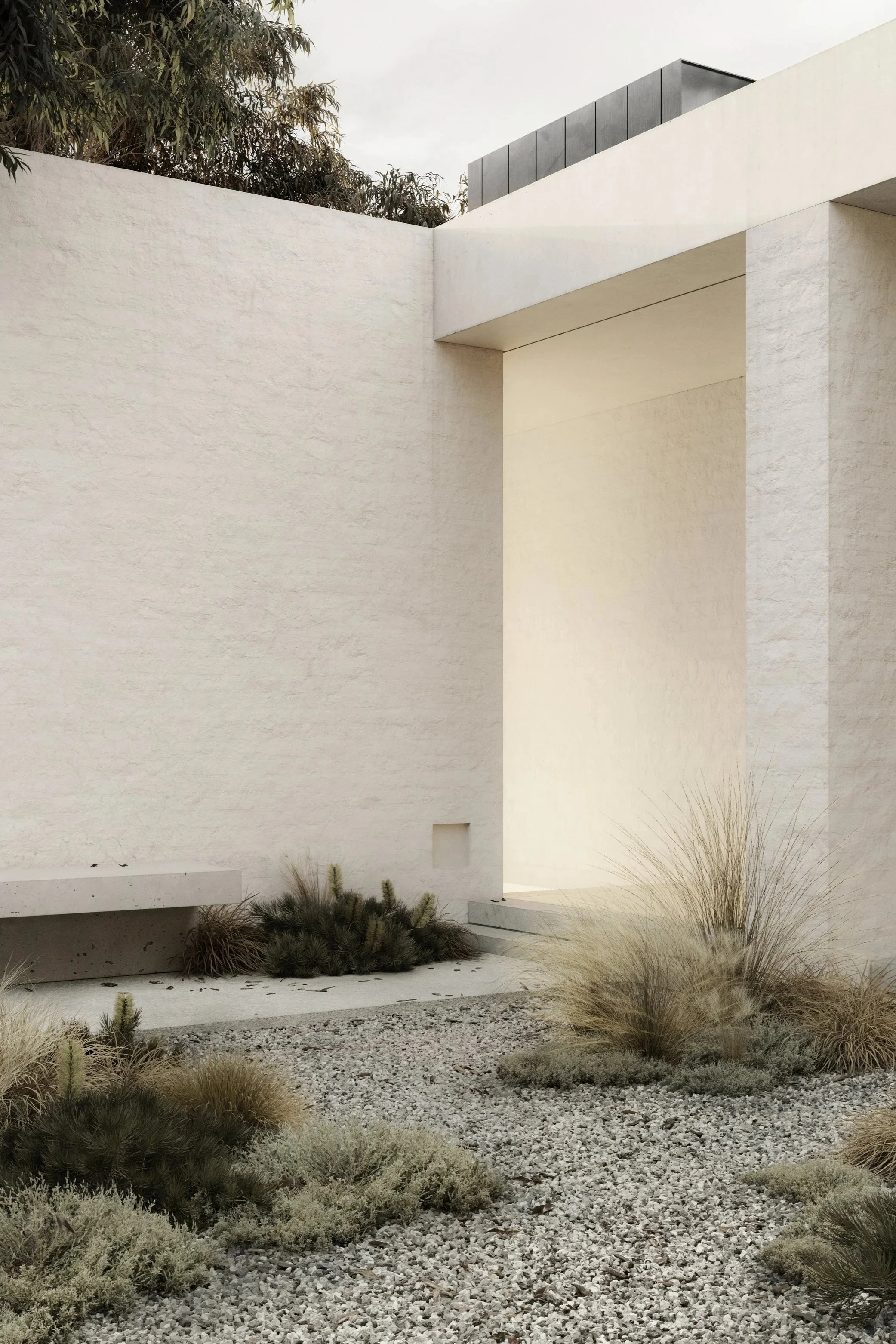Among all the spaces that make up a home, the entry is perhaps the most overlooked. It rarely appears in a client’s briefing document. Yet it is the first and last moment of every visit, the space that negotiates between the world outside and the life within.
When we begin to plan a home, the location and composition of the entry are critical. In this small zone, many different performances unfold: waiting for the door in the rain, greeting a group of guests, lingering for farewells and doorway conversations, slipping on shoes, or presenting flowers and a bottle of wine. The entry is a small stage - sometimes with a cast of many, often with only one actor - where architecture must quietly manage light, movement, and mood.
From a planning perspective, we look to accommodate not just the ergonomics of these rituals but the emotion that accompanies them. The entry should offer shelter and privacy, a moment of pause that smooths the transition from public to private life. It must be practical yet ceremonial, allowing for everyday comings and goings while still holding a sense of grace. A light that spills across the threshold, a covered step, the sound of a door closing softly - all these small gestures signal welcome and belonging.
Architecturally, the entry is both a space for standing and a space for passing through. It holds stillness and movement at once. We often draw on Frank Lloyd Wright’s idea of compression and release - a sequence that moves from dark to light, from narrow to open. This rhythm creates intimacy and drama in quick succession, preparing the body and the mind for what lies beyond.
A well-designed entry is not simply an access point but an emotional calibration, a first act that sets the tone for the rest of the home.
In several recent projects, we have explored how the entry can also test the boundaries between inside and out. By manipulating light, enclosure, and view, the threshold becomes ambiguous - part garden, part room. Screens, courtyards, and overhangs allow the space to breathe, extending the welcome before one even crosses the door. In this way, the entry continues the conversation we began with the courtyard: both are transitional territories that invite a slower rhythm of arrival and departure.
At its best, the entry performs two tasks simultaneously. It must function with absolute clarity - logical, sheltered, effortless - yet it should also evoke emotion, creating the briefest moment of theatre in the everyday act of coming home. For all its modest size, the entry remains a deeply human space, one that reminds us that architecture begins not with walls, but with thresholds.




